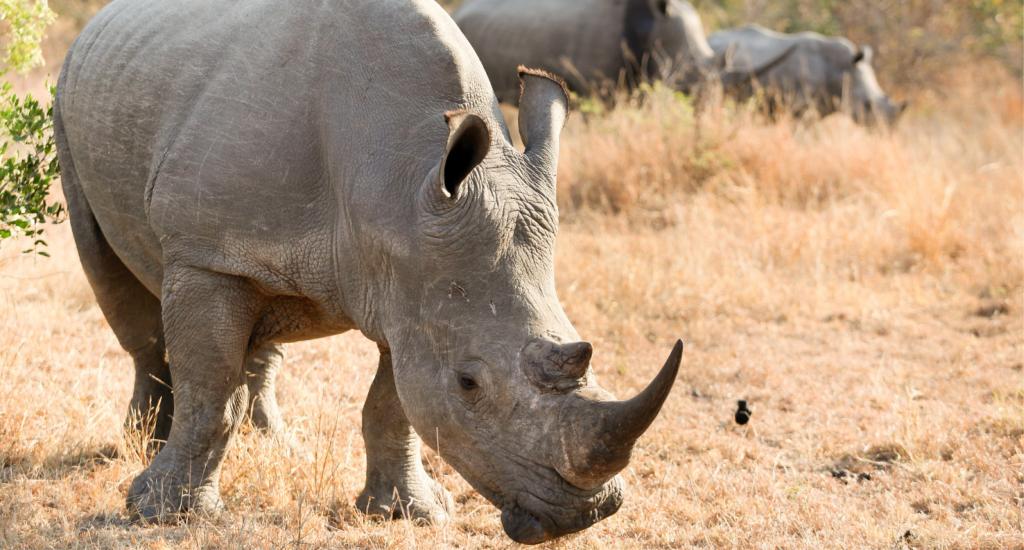SANParks' Vision 2040 marks a new era of conservation

When SANParks introduced its Vision 2040 strategy a year ago, it was billed as a transformative step for conservation in South Africa. At the recent SANParks Vision 2040 Indaba held in Gqeberha, Forestry, Fisheries and the Environment Minister Dion George made it clear that this was not just an ordinary strategy but a pivotal moment in the country's conservation journey
“Vision 2040 is not simply about preserving land or counting species,” he told delegates. “It is about integrated conservation. It is a deliberate, holistic approach that links ecological integrity, climate resilience and human well-being. It is about reimagining landscapes as Mega Living Landscapes, where protected areas, agricultural land, communal spaces and private holdings come together in a network that supports biodiversity, sustainable livelihoods and cultural heritage”.
He added that this reimagining is about changing the very core of conservation. “The environment and people are not separate,” he said firmly. “They are inextricably connected. The well-being of one depends on the thriving of the other”.
Protecting the lives of rangers
The Minister condemned the illegal harvesting of wild animals describing it as “undermining livelihoods, threatens biodiversity and destabilises local economies”.
“Our iconic species define our natural heritage and sustain our tourism and economy. Yet from rhinos to lions, pangolins to abalone, illegal harvesting is a sophisticated, multi-million-rand criminal enterprise,” George said.
The Minister commended and paid tribute to the rangers who risk their lives each day to protect South Africa’s natural heritage.
“They are guardians of life, defending species against organised crime networks, poachers and traffickers. They confront danger daily, often away from families, yet their commitment never wavers”.
“I am committed to ensuring that they are equipped, valued and protected. Without them, no conservation strategy can succeed”.
George highlighted one of his department’s flagship initiatives: the Kruger, Kirstenbosch, iSimangaliso Icon Status Strategy (KISS).
“Our natural heritage is one of South Africa’s greatest assets,” he said. “Through KISS, we are elevating three of our national icons into global leaders in conservation, ecological protection, and inclusive tourism. These parks and gardens are not just destinations. They are engines of employment, education and sustainable development”.
Job creation
The Minister linked this to the broader economic vision, stating: “By harnessing the biodiversity economy, South Africa is projecting global leadership while creating economic opportunities at home. The revised National Biodiversity Economy Strategy is estimated to unlock 397 000 jobs and inject R127 billion annually into our economy by 2036”.
Protecting the rhino
Of all species, none captured George’s tone of urgency and hope more than the rhinoceros.
“South Africa is the custodian of over 80% of Africa’s white rhino population”. “Early 20th century conservation action grew our rhino numbers from fewer than 100 to over 20 000 by 2010. Recent years have seen a decline due to poaching, drought and organised crime. The KISS campaign is not only about protecting rhinos. It is about community empowerment, green jobs and inclusive conservation”.
He added that SANParks had launched the Rhino Renaissance Campaign, in which it trains and deploys 90 Rhino Monitors annually. These are young South Africans from communities bordering the Kruger National Park who bring local knowledge, ancestral tracking skills and a vested interest in the future of our wildlife.
“Using drones, GPS collars, and digital reporting systems, these monitors provide real-time intelligence to enforcement teams”.
He added that this work symbolises the heart of Vision 2040. “Our strategy is comprehensive. From 24/7 rhino tracking and targeted dehorning to DNA tagging, genetic research and transnational cooperation, the Rhino Renaissance represents a blueprint for what integrated conservation can achieve”.
G20 Presidency
The Minister noted that South Africa’s leadership during its G20 Presidency had created a unique opportunity to highlight the country’s strengths in conservation, policy innovation and environmental stewardship on the global stage. He emphasised that the country’s integrated approach, linking biodiversity protection, sustainable land use, climate resilience and community empowerment, is increasingly being recognised as a global model.
He highlighted the importance of international partnerships, noting that collaboration with organisations such as the United Nations Environment Programme, the Convention on Biological Diversity, the World Wildlife Fund and the Global Environment Facility had significantly strengthened South Africa’s conservation efforts. These partnerships, he explained, help ensure that the country’s strategies align with global climate and biodiversity commitments, while also unlocking international funding, technical support, and knowledge exchange.
But his emphasis remained on South Africa’s role as a pioneer. “Protected areas are no longer isolated pockets of greenery. They are strategic assets in climate mitigation, carbon storage, and water security. Through nature-based solutions, we are demonstrating that conservation is essential to achieving climate targets and sustainable development goals”.
Looking ahead
Reflecting on the progress made on the vision so far, George was clear-eyed about both achievements and challenges.
“As we reflect on the progress of this first year, it is clear that Vision 2040 is more than a strategy. It is a movement. A movement where parks are people-centred, biodiversity thrives, and communities are empowered to share in the benefits of conservation,” he said.
“Yet we must remain vigilant. The threats we face – climate change, wildlife crime, habitat loss – are complex, interconnected and urgent. Our response must be equally integrated, coordinated across agencies, borders and sectors and anchored in the principles of justice, equity and
inclusivity”.


